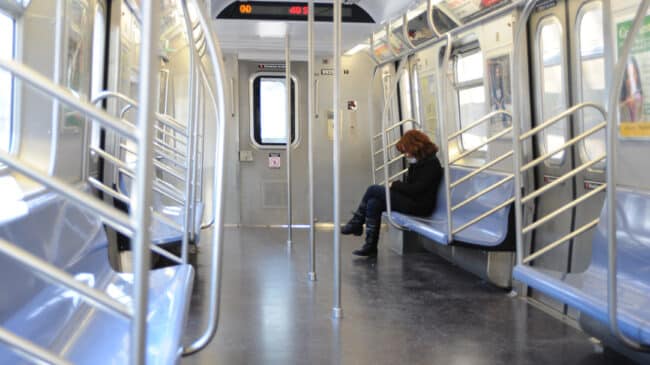The COVID-19 pandemic will be remembered as a historic and transformational event impacting the human condition across the globe. Its consequences, direct and indirect, are likely to play out over many years as the human costs impact families, loved ones, and the economy, inclusive of dramatic additional government debt.
COVID-19 has produced changes in the behavior of individuals, businesses, and governments. Some share of these changes, initially in response to the COVID-19 pandemic, are now expected to remain long after COVID-19 has diminished as an overwhelming public health threat.
Public transportation is among those sectors disrupted by COVID-19 and unlikely to return to pre-COVID-19 conditions. The initial plummeting of mass transit ridership was associated with the shutdown of activities and due to exposure fears when using travel options that do not allow isolation or sufficient social distancing.
The dramatic ridership reductions persisted as shutdowns were discontinued. Individuals who had to rely on public transportation returned but many others did not. Most public transportation trips remained lost as communication substituted for travel or commuters shifted to alternative modes, including newly acquired automobiles, that reduced exposure risk.
These ridership losses persist with unprecedented consequences. Extrapolating ridership trends from the National Transit Database through April 2021, which captures the first full year of COVID-19-impacted ridership, results in 12-month levels approximately 65 percent below the 12-month period prior to the start of COVID-19. For the corresponding period, service levels are extrapolated to track approximately 23% below pre-COVID-19 levels.
While national data on spending and fare revenues for this period will not be available for months, Figure 1 shows the transit ridership trend since 2010 and Figure 2 shows the trend in revenue-miles of transit service.
After March 2021, the rolling 12-month annual ridership should trend positive with the increase dependent on the pace of recovery in mitigating COVID-19 and the extent to which travelers return to transit.
Source: National Transit Database. Trend extrapolated through April 2021 to estimate a full year of COVID-19-related impacts.Source: National Transit Database. Trend extrapolated through April 2021 to estimate a full year of COVID-19-related impacts.
Source: National Transit Database. Trend extrapolated through April 2021 to estimate a full year of COVID-19-related impacts.
The COVID-19 pandemic has accelerated the pace of change and when, hopefully, the pandemic fades as a critical factor in travel behavior, then demographic, economic, and particularly technological changes are likely to leave us in a far more dynamic travel behavior environment than has persisted for the past three-quarters of a century. We have historically been content to use 30-year planning horizons for transit capital investment planning that were driven by often 10-year-old travel behavior models and data and relatively stable presumptions with respect to travel choices, capital and operating cost trends, propulsion system efficiency, and the spectrum of travel choices with which transit competes. Continued reliance on dated planning methods and pre-coronavirus data is fraught with risks as we plan the future.
The absence of easy solutions to the challenges facing public transportation—or the fact that these solutions may not be satisfying to all stakeholders—is not an excuse for policymakers to ignore the magnitude of the challenges facing public transportation.
The core goals of public transportation—providing mobility particularly for those without alternative means and capturing the economy of mass movement of people in markets where those conditions exist—remain important and widely held goals for transportation. Planners and policymakers must explore the full range of methods of accomplishing these objectives without preconceived commitments to status quo plans and strategies.
Full Policy Brief: Public Transportation Must Change After COVID-19


